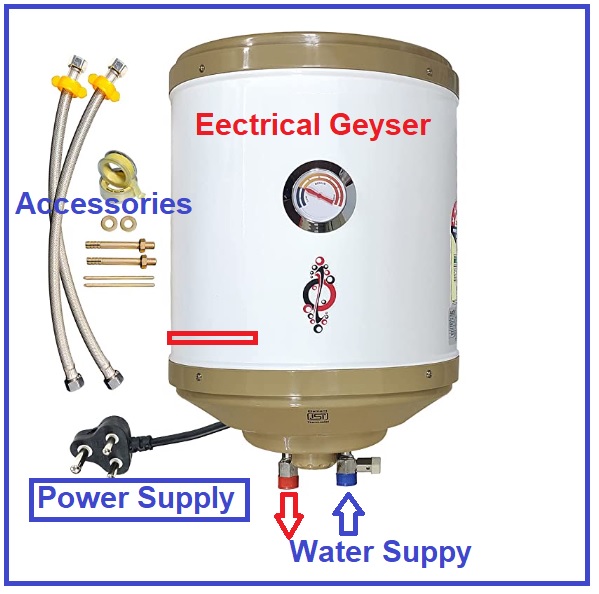Typical geyser sizes offer a balance between capacity.
Typical geyser sizes offer a balance between capacity.
Blog Article
Exactly how to Choose the Right Geyser to Take Full Advantage Of Energy Performance in Your Home
From recognizing the different types of hot springs, to evaluating their energy performance ratings and thinking about positioning strategy, each decision plays an essential role in optimizing performance. Let's embark on this journey to uncover just how to make the most informed option for a hot spring that will certainly decrease your power costs while ensuring optimal performance.

Comprehending the Different Sorts Of Geyser
While there are different sorts of geysers readily available on the market, comprehending the differences between them is important for energy effectiveness (geyser sizes). The initial type, storage space hot springs, are the most typical and store warm water in a container for usage when needed. They are offered in various capacities and are normally energy-efficient, yet they can shed heat when not being used
The 2nd type is the tankless geyser, which heats up water on need, bring about less energy waste but requiring a higher first power draw. There are heat pump geysers that utilize electrical power to relocate warmth from one area to another instead of generating heat directly. They can be two to 3 times extra power efficient than traditional storage space geysers. Lastly, solar geysers use solar energy to heat up the water, making them the most energy-efficient however likewise the most pricey.
Evaluating Your Household's Hot Water Demands
Prior to diving into the purchase of a geyser, it is pivotal to assess the hot water demands of your family. This assessment needs to think about numerous variables including the variety of family participants, frequency of warm water use, and the number of hot water electrical outlets in the home (geyser sizes). A tiny family members with irregular hot water usage could need a smaller sized, less powerful geyser contrasted to a larger household with numerous day-to-day warm water demands
The sort of appliances that need warm water likewise play a significant duty. Dishwashing machines and washing equipments, for instance, might need more warm water than a simple shower or kitchen area sink. In addition, specific activities such as showering official source or cleaning additionally influence the regularity and quantity of hot water required.
Evaluating Energy Performance Ratings of Geyser
Having actually evaluated the warm water demands of your home, it is necessary to turn your interest to the power performance ratings of geysers. These scores, generally given as Energy Element (EF), show a geyser's overall energy performance based upon the quantity of warm water created per system of gas eaten over a typical day. The higher the EF, the much more effective the hot water heater.

Factors To Consider in Geyser Dimension and Positioning
Beyond power effectiveness rankings, the dimension and positioning of your geyser are crucial elements to consider. The dimension of the geyser need to straighten with your family's warm water demands. A tiny geyser might utilize less energy yet might not supply sufficient warm water for numerous usages at the same time, whereas a larger device can fulfill higher demand but might take in more power.
Positioning likewise affects power effectiveness. Hot springs need to be mounted near points of usage to minimize warmth loss during water transportation. A centrally situated geyser can service numerous areas properly. Additionally, taking into consideration thermal insulation, a hot spring located in a warmer location sheds less warmth and as a result utilizes less power to preserve the water temperature level.
Expense Evaluation: Balancing First Financial Investment and Long-Term Cost Savings
While dimension and placement most certainly play considerable duties in a geyser's power efficiency, one have to not neglect the economic aspect. When thinking about the first investment, the cost of energy-efficient hot springs can be higher than standard designs. The boosted ahead of time cost can be offset by lasting power savings, making it a beneficial financial investment in the lengthy run (geyser sizes).
Analyzing long-term cost savings needs an understanding of the geyser's energy rating. A home appliance with a greater rating will consume much less energy, equating to reduced energy costs over time. Federal government motivations and rebates for energy-efficient home appliances can likewise assist recover preliminary expenses.
Lastly, maintenance and life expectancy ought to be factored in. Energy-efficient geysers usually have much longer life-spans and reduced upkeep expenses, contributing to overall savings. For that reason, when balancing initial investment and you can try this out long-term financial savings, one need to take into consideration not just the purchase price but also energy usage, federal government rewards, and maintenance costs.

Verdict
Picking an energy-efficient geyser calls for mindful factor to consider of numerous factors. These include understanding the types of geysers, assessing your home's hot water needs, reviewing power performance scores, and computing price advantages. The best geyser size, placement, and insulation can significantly reduce power costs and ecological effect. For that reason, making a well-informed choice can bring about significant long-lasting cost savings, making it a worthwhile investment for your home.
Report this page